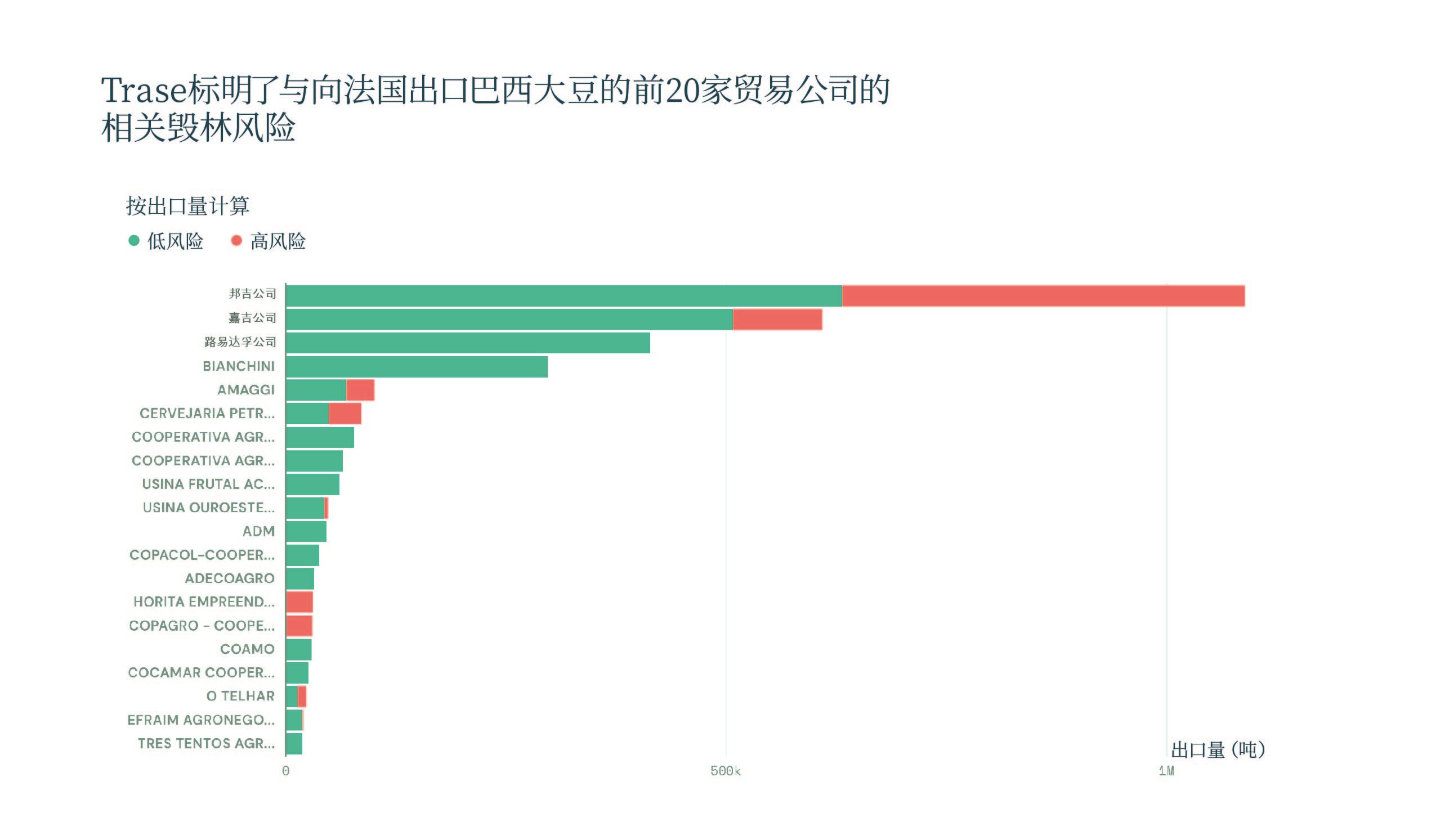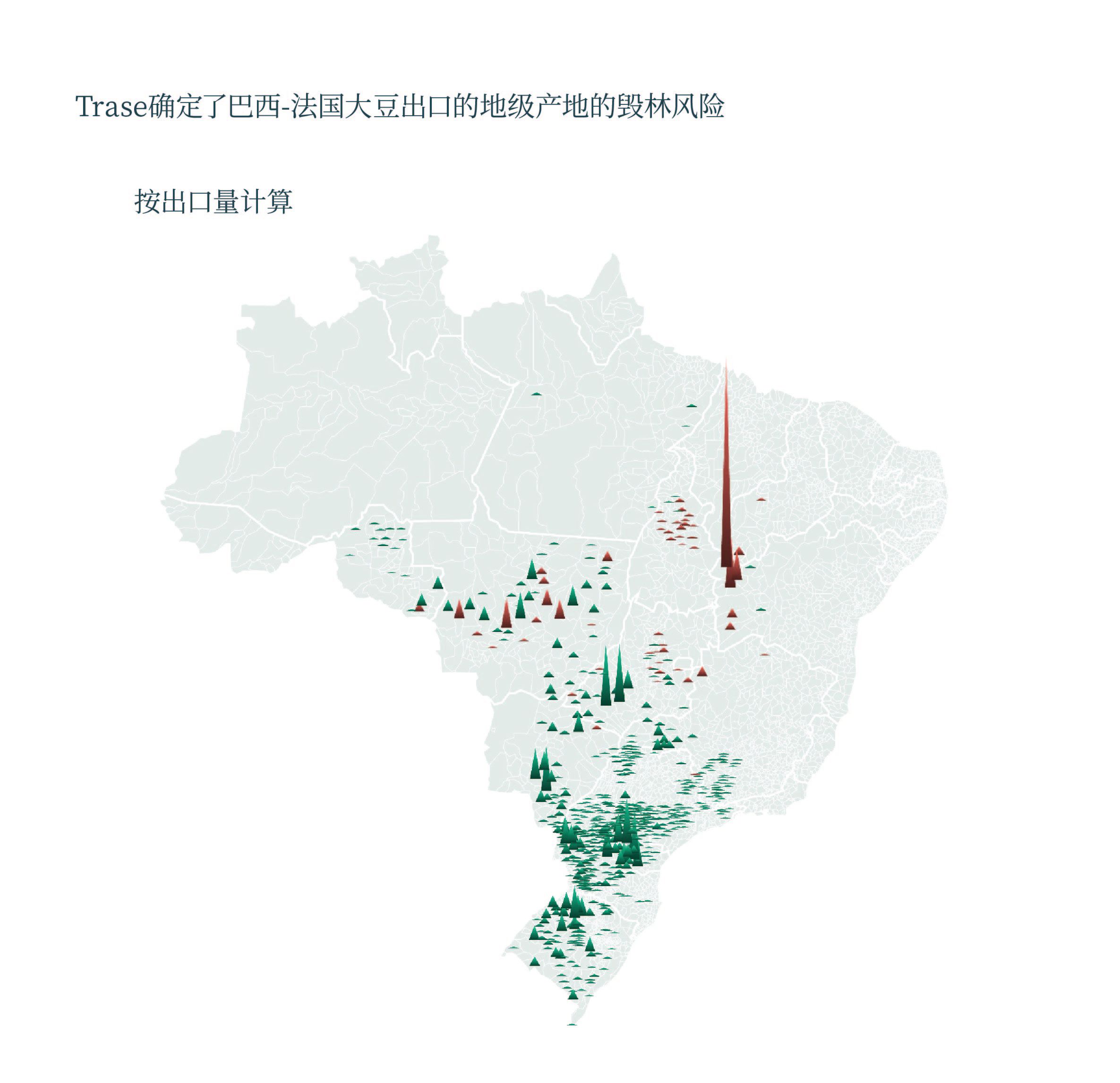
2018年,法国启动终止毁林产品进口的国家战略(SNDI),此前一年,法
国已在气候计划中做出相应承诺。该战略的目标是:到2030年,停止进口
毁林风险最高、对气候变化影响最大的不可持续农产品,如牛肉、可可、
棕榈油、橡胶和大豆等。
该战略由法国生态转型部牵头实施,其中包括多项举措,例如建立国家风险评估平台以鼓励企业和投资者采取行动,制定和履行零毁林承诺,提高透明度,以便进行风险分析和责任确定,并推进有毁林风险产品的追溯工作。
然而,由于全球贸易十分复杂,可用和可靠的数据有限,导致供应链溯源和此类战略的实施面临挑战。这种缺乏可视性的状态降低了企业和投资者降低毁林风险的意愿与能力。
开展供应链追溯,以提高透明度,加强风险分析
Trase与欧洲森林研究所和全球林冠组织一道,为法国生态转型部制作了交互式风险评估平台,以提高供应链透明度,并鼓励企业采取行动,停止采购有毁林风险的大豆。
Trase汇总了海关、税务和资产所有权相关的数据,以便将生产国的毁林与消费市场联系起来。该交互式风险评估平台页面可以实现海关数据可视化,以便生产者快速了解供应链中的毁林风险集中区。用户还可以筛选结果,只关注特定的进出口公司。
目前,法国利用该平台重点关注巴西大豆进口,因为大豆是法国进口量最大的农产品,每年进口量约350万吨,其中约三分之二来自巴西。未来,纳入其他有毁林风险的商品和生产国数据更新工作已在进行中。
为降低毁林风险提供行动建议
平台图表上显示了各公司进口到法国的大豆数量、这些大豆在巴西的种 植地和出口港口。尤其,该平台图表会估算各家公司进口大豆的相关毁林 风险,并确定风险基准,以区分低风险和高风险。根据终止毁林产品进口 的国家战略,多方利益攸关者大豆工作组建议将风险阈值设定为90%, 即对于法国进口的巴西大豆,如果一公司的最大出口量造成的毁林低于 总毁林面积的10%,则可以将其视为“低风险”。
根据这一推荐基准,数据显示,在2017-2018年间,出口到法国的高毁林 风险大豆中,其中69%与美国农产品贸易商邦吉公司(Bunge)相关,8% 与另一美国贸易商嘉吉公司(Cargill)相关

从数据还可以看出,巴西对法国的大豆出口仅占总出口量的20%,但却造成了该行业超过90%的毁林风险。而在向法国市场出口的地区中,巴伊亚州的普雷图河畔福莫萨市毁林风险最高。

法国生态转型部在其政府网站上发布该平台,以示决心,并将与法国大豆进口公司合作,鼓励其采取行动,降低毁林风险。Trase将提供明确和可靠的数据,以支持各方的讨论。
“Trase与欧洲森林研究所合作开展了重要的工 作,收集并处理了生产大豆(和其他毁林风险产品)的主要热带国家的数 据,我们也因此可以估算法国多数大豆进口的毁林风险。”
法国生态转型部表示









